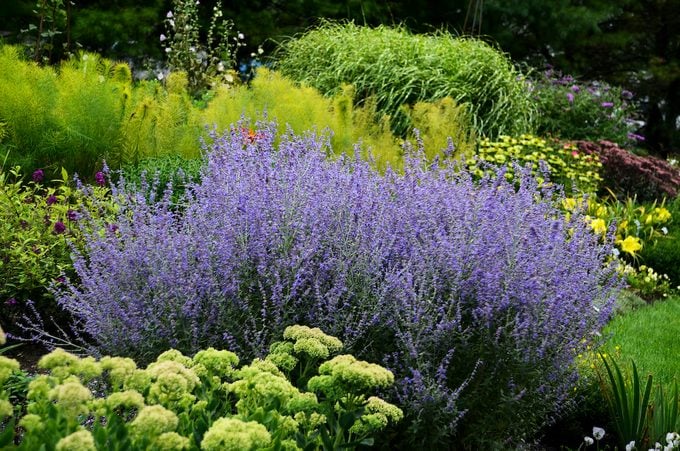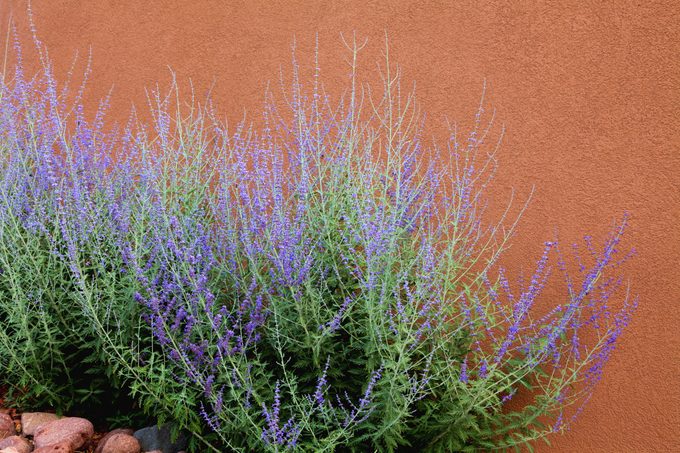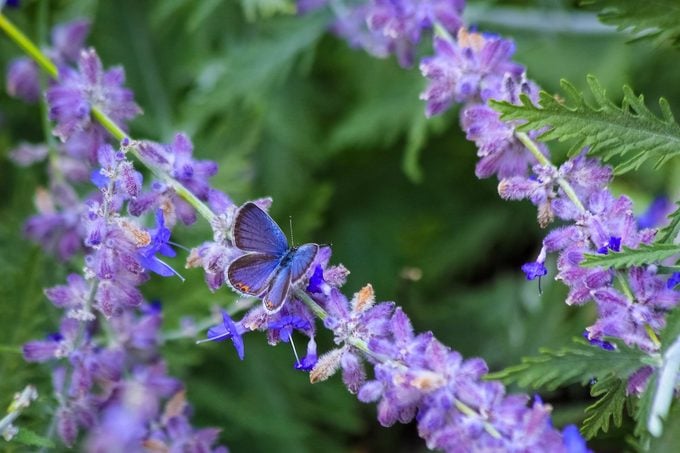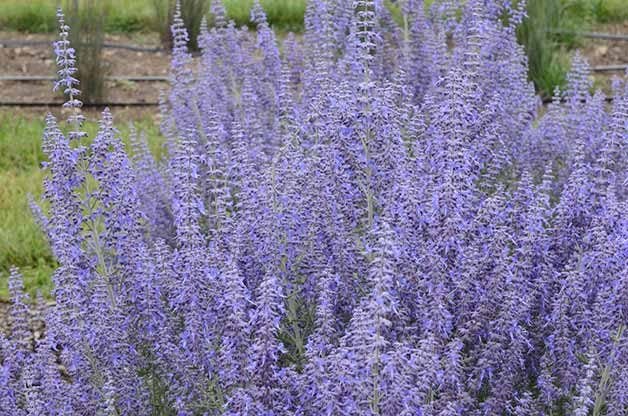Plant Russian Sage for a Boost of Fall Color
Updated: Jul. 26, 2022
Keep your garden blooming well into fall by planting Russian sage. Learn how to grow Russian sage, discover the benefits it offers and more.
Our editors and experts handpick every product we feature. We may earn a commission from your purchases.

Fall often brings mixed emotions for gardeners. While there’s still plenty to do, sometimes it’s hard not to wish that summer’s colors lasted a little longer. In some cases, that’s the truth: Russian sage, a popular pick for pollinators, keeps its gorgeous blooms from midsummer through mid-fall. Here’s what you should know about adding this multi-season, hardy plant to your yard.
Russian Sage Care

Scientific name: Perovskia atriplicifolia
Growing zones: 5 – 9
Light needs: Full sun.
Size: 3 to 4 feet tall and nearly as wide.
Grown for: Low-maintenance color in dry landscapes.
Foliage: Gray-green leaves.
This perennial packs oodles of color, with lavender and blue blooms that appear in July and thrive into October. The Russian sage plant’s lacy leaves sprout off woody stems; just plant it in a sunny spot with well-draining soil. To avoid having to stake, place the plant behind a sturdy companion to keep it upright. Prune plants back to 4 inches in late winter or early spring for more compact growth, or grow a compact variety.
Check out 10 purple perennials to plant for beauty each year.
Benefits of Growing Russian Sage

Many classic “hummingbird flowers” conclude their growing season in late summer and early fall, but not Russian sage! Migrating hummingbirds need nectar sources to fuel their incredible journeys south, so encourage them to stop by and fill up with this late-season bloomer.
As if the hummingbird benefits aren’t enough, this plant offers some sweet scents, too. One of the reasons we love it is that the fragrant foliage adds a bit of aromatherapy to spring garden cleanup. And finally, it’s a tried-and-true trooper; besides being deer- and rabbit-resistant, it tolerates heat, wind, drought and poor soil.
Cultivars to Try

Blue Jean Baby features blue tones and shorter stalks, or enjoy Denim ’n Lace’s bright, purple-blue flowers for color well into autumn.




















